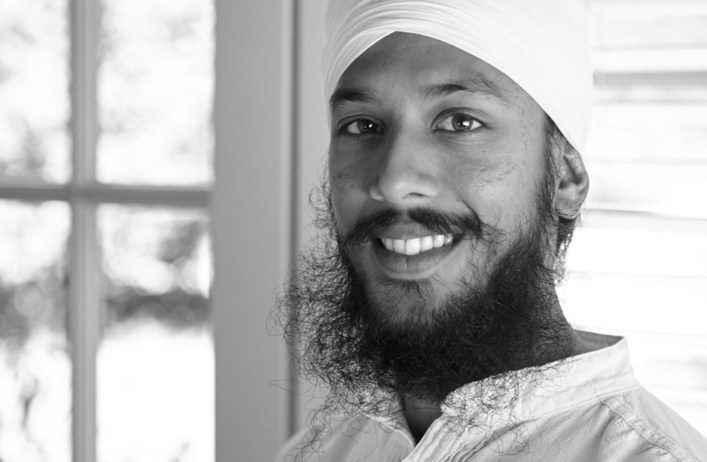by Nikhil Ramburn and Sat Bir Singh Khalsa, Ph.D

Parkinson’s disease (PD) is a progressive neurological disorder that is characterized by tremors, stiffness, or slow movement, although symptoms may vary greatly in patients. Symptoms may begin on one side of the body and worsen on that side, even when the symptoms are bilateral. Risk factors for the disease include exposure to certain environmental toxins, old age and having a relative with PD. In fact, researchers have identified specific genetic mutations that cause PD, but these are uncommon except in the rare cases of family members affected by the disease. Nearly one million Americans will be living with PD by 2020, and men are 1.5 times more likely to have PD than women. In PD, certain neurons in the brain gradually break down or die and many symptoms are due to the loss of those neurons, which are responsible for the production of a chemical messenger called dopamine. Clumps of microscopic substances within brain cells called Lewy bodies are also an important marker of the disease. Conventional pharmacotherapy treatment is symptomatic and either increases or substitutes for dopamine. Although medications help patients manage their problems with movement and control the tremors, the efficacy of the drugs diminish over time, and side effects include hallucinations, swelling, impaired urination, and compulsive behaviors.
Since there is currently no proven pharmacological therapy that can modify or halt the progression of PD, physical exercise may be a viable complement to manage the inherent decline of the disease. Recent evidence suggests that patients with PD who exercise might experience motor benefits such as improved mobility, balance, and gait velocity as well as non-motor improvements in mood, sleep, cognition, and quality of life. Other complementary therapies such as massage, acupuncture, deep brain stimulation, gene therapy, and herbal treatments may offer similar motor and non-motor benefits and alleviate some drug-induced side effects. In fact, over 50 percent of PD patients in the US use complementary or alternative therapies in addition to, or instead of, conventional treatment. Yoga and meditation rank amongst the most highly used modalities. Notably, the perceived efficacy of meditation is striking, with 85 percent of patients finding this practice helpful in reducing symptoms of stress, tremor, muscle tightness, anxiety, and improving clarity of thought. Since yoga combines meditation and physical benefits of exercise and breath regulation, it may prove to be an effective complementary treatment to PD, certain to be at least as effective as meditation alone.
In an early pilot randomized controlled trial (RCT) at the University of Kansas, thirteen patients with mild and moderate stages of PD were randomly assigned to either a yoga intervention or a control group. The intervention consisted of twice-weekly sessions for 12 weeks. Researchers found that in as little as 6 weeks, the patients’ scores on the Unified Parkinson’s Disease Rating Scale (UPDRS), a clinical measure of health-¬related Quality of Life (QOL), was significantly improved. This improvement in UPDRS scores could be explained by improved motor symptoms such as decreased falls and improved balance as well as non-motor symptoms such as decreased anxiety and stress. Given the progressive nature of PD, the absence of deterioration of self-reported symptoms and improvements in clinical outcome scores suggest that yoga may be an effective intervention.
Researchers from Joseph Signorile’s lab at the University of Miami set out to determine how yoga would compare to exercise. Forty-one (41) patients with PD were randomly assigned to a power training (PWT) intervention, a high-speed yoga program, or a non-exercise control group. The yoga group practiced for one hour, twice per week for 12 weeks, and participants held a static pose for one breath before quickly transitioning to the subsequent poses in the series. The researchers found no differences between the yoga and the PWT group, but both programs significantly improved physical performance on a variety of outcome measures such as balance, walking speeds, and fall risks in older (60-90 years) PD patients. Another study from Signorile’s lab also found that three months of a Power Vinyasa yoga program was associated with increased speed of movement, less joint rigidity, increased muscle strength, and improved QOL scores. Given these findings and the exceptional level of exercise adherence, this form of power yoga could be a viable intervention to increase physical function in PD patients.
Additional studies support the therapeutic use of yoga as a rehabilitation intervention for individuals with PD. In a 2018 pilot RCT, patients received an eight-week Hatha Yoga intervention which included postures, yogic breathing (pranayama), and meditation. In contrast to the previously mentioned research, the breathing in this intervention was slow and focused, and the postures were held for multiple breaths. The quantitative findings are consistent with previous studies such as improved balance, motor function, and gait. Furthermore, the additional qualitative reports acquired suggest improved home and community mobility, formation of new supportive relationships, and increased ease in dressing themselves. This study further supports including a yoga intervention as community-based rehabilitation for individuals with PD.
Recent studies by Cheung et al. at the University of Minnesota focused on determining the safety and feasibility of yoga interventions for PD patients. Since increased risk of falling often accompany the progression of PD, Cheung et al. devised a 12-week intervention of twice-weekly yoga classes to address the unique concerns of the PD population. For example, postures focused on increasing the range of motion in the spine, hips, and shoulder girdles, which are particularly affected by the motor symptoms of PD. In addition, to improve balance and safety, all mats were positioned around the edges of the room next to the walls of the studio so that patients had an additional support for transitions and standing poses. The researchers deemed the program feasible with 90 percent of participants attending more than 75 percent of the classes and four out of 19 participants attended all the classes. Also, since no adverse events were reported, yoga therapists who seek to implement yoga for PD patients can consider the safety precautions employed in this intervention. In another study, they set out to determine the effect of yoga on oxidative stress since the latter plays an important role in the degeneration of dopaminergic neurons in PD. Although the participants in the 12-week yoga intervention had good adherence and the participants reported that they “definitely enjoyed” the classes, there was no major difference in oxidative stress markers between the intervention and the control group.
Despite these encouraging findings, further research with larger sample sizes is needed to uncover the underpinning mechanisms of the action of yoga and to determine the impact of yoga on oxidative stress in PD patients. An upcoming trial comparing yoga with stretching and resistance training was recently completed in March 2018. The primary outcome measure from this study will be the level of psychological distress measured using the Hospital Anxiety and Depression Scale and therefore help us broaden our understanding of yoga’s ability to address psychological distress among patients with chronic neurodegenerative illness.

Nikhil Rayburn grew up practicing yoga under mango trees in the tropics. He is a certified Kundalini Yoga teacher and has taught yoga to children and adults in Vermont, New Mexico, Connecticut, India, France, and Mauritius. He is a regular contributor to the Kundalini Research Institute newsletter and explores current yoga research.

Sat Bir Singh Khalsa, Ph.D. is the KRI Director of Research, Research Director for the Kripalu Center for Yoga & Health, and Assistant Professor of Medicine at Harvard Medical School. He has practiced a Kundalini Yoga lifestyle since 1973 and is a KRI certified Kundalini Yoga instructor. He has conducted research on yoga for insomnia, stress, anxiety disorders, and yoga in public schools. He is editor in chief of the International Journal of Yoga Therapy and The Principles and Practice of Yoga in Health Care and author of the Harvard Medical School ebook Your Brain on Yoga.
Teacher
KRI is a non-profit organization that holds the teachings of Yogi Bhajan and provides accessible and relevant resources to teachers and students of Kundalini Yoga.


 Français
Français Deutsch
Deutsch Italiano
Italiano Português
Português Español
Español 简体中文
简体中文
More Related Blogs